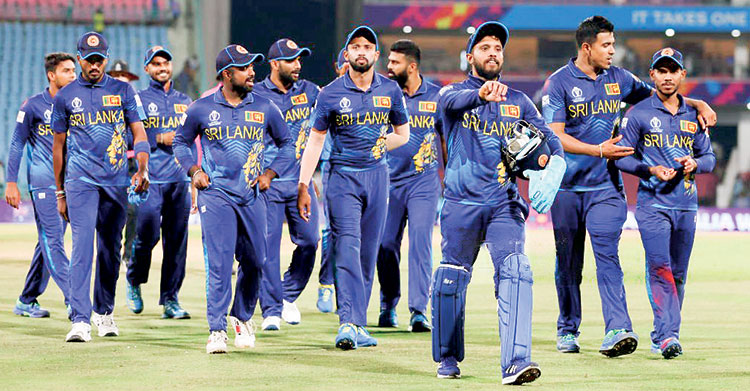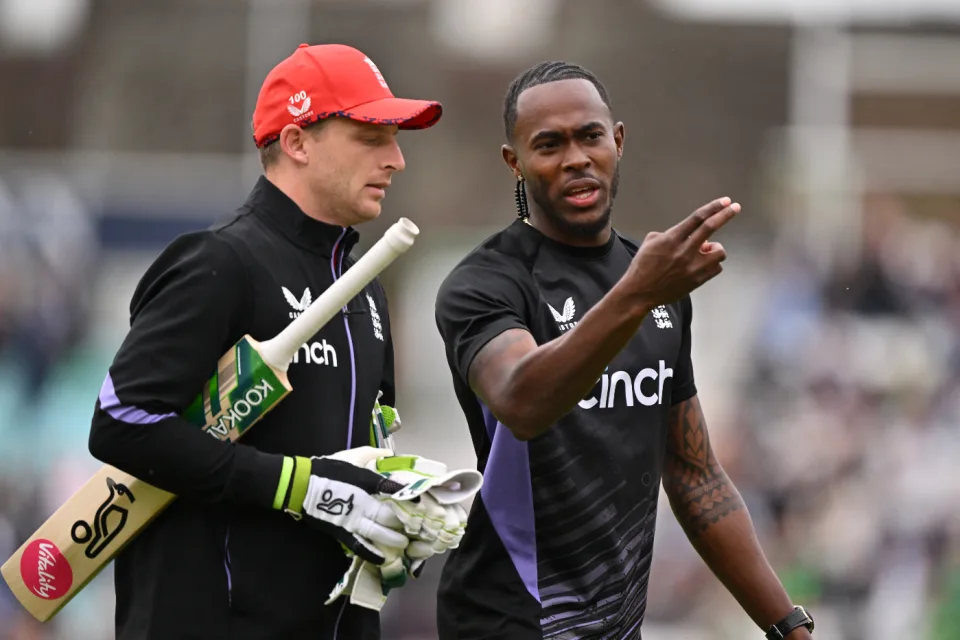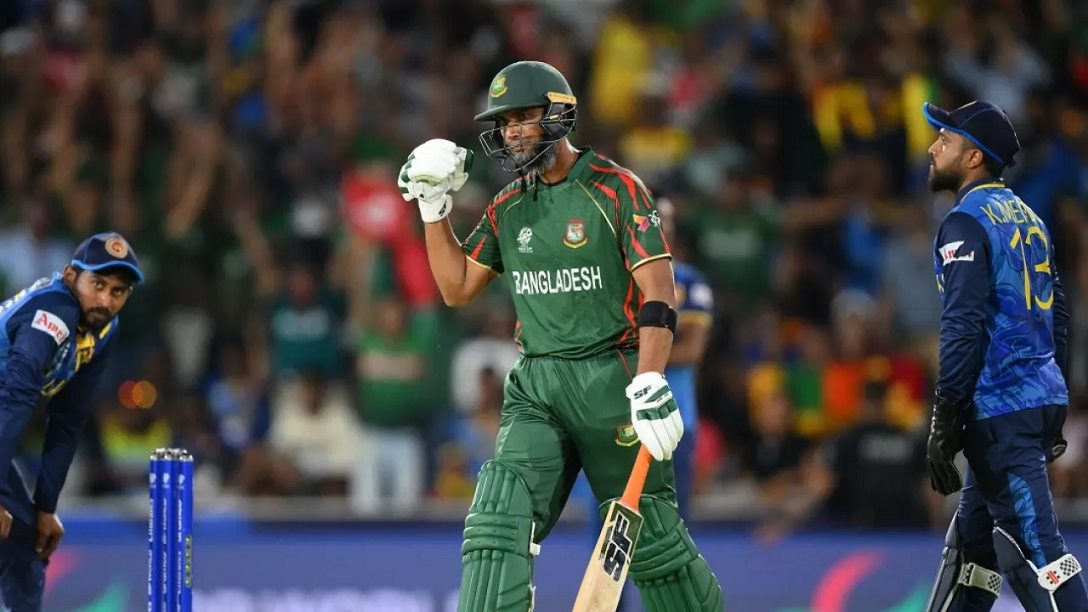Sports
Cricket’s stakeholders need to act now

by Rex Clementine
Dr. N.M. Perera, a former Finance Minister and a former President of the cricket board, had warned about the dangers of Executive Presidency in late 1970s. Too much power or influence ending up at one individual’s disposal is dangerous in any sphere of life.
Whenever our cricket had faced challenging times, we had taken some extreme measures. Like in 2017 when we wanted to hire a new Head Coach, we changed the constitution in such a way that the Head Coach could be part of the selection panel. That proved to be disastrous and two years down the line we rectified the mistake.
Even at present, there is too much power at the disposal of one coach.
A system where we take collective decisions and persevere with them is far more ideal than one individual calling the shots.
The Cricket Committee at one point included some of the finest brains of our game. Sadly, most former captains are reluctant to join the Cricket Committee these days for they feel being undermined. At the end of the day, Cricket Committee is only an advisory committee to the Executive Committee and some former captains feel their inputs not valued as the veto power is with the Executive Committee. Let our brightest brains join the decision-making process.
It is paramount that we get a competent coaching staff to look after our cricket. In India, the coaching staff is picked by a committee that comprises Sachin Tendulkar, V.V.S. Laxman and Sourav Ganguly. Who is choosing the coaching staff in our neck of the woods? Your guess is as good as mine.
Our World Cup campaign is going from bad to worse and everyday we hit new lows. It is painful and heartbreaking to watch. On Monday, Sri Lanka had the Aussies under the pump having reached 125 for no loss. We were looking at a total in excess of 300 and game over for the Aussies. But then there was a dramatic collapse and we were shot out for 209 with more than six overs to spare. No surprise anymore. We have seen them too often these days.
Our selection has been flawed. We desperately want to fix the middle order woes, but we aren’t carrying an extra middle order batter.
Dhananjaya de Silva is an outstanding cricketer, but he is not your best finisher and number six is not his position. Since the selectors avoid the names like Angelo Mathews and Dinesh Chandimal like the plague, they could have looked at other options like Nuwanindu Fernando, Ashen Bandar, Kamindu Mendis and Sahan Arachchige. But they chose not to.
Our over reliance on all-rounders, in Sanjay Manjrekar’s words, ‘bits and pieces cricketers’ had backfired before. But we did not learn. We wanted to replace Dasun Shanaka. Who is taking his place? Chamika Karunaratne. How many overs did he send down against Australia in Lucknow? Is he a proper batsman who can repair the innings when there is a collapse. No. We are far better off playing a bowler than depending on the extra all-rounder.
Prior to the start of the current tournament, ten Sri Lankans had scored hundreds in World Cups. Avishka Fernando was one of them. But he is not in the current World Cup squad. We are told that he was overlooked as there were fitness issues with him. His skin folds were apparently high. Good enough reason to leave him out. But then, how come you picked Maheesh Theekshana and Lahiru Kumara, whose skinfolds too are high. Surely, there can’t be two sets of rules for players. And for three years you tolerated Bhanuka Rajapaksa when his skinfolds were always high.
We have got to do something urgently to ensure that our domestic cricket is up to scratch and the only way we are going to do that is by cutting down the number of First-Class teams involved in competitions. If your domestic cricket is diluted and lacks competition, then you are going to struggle internationally.
Our selectors are picking squads based on players’ performances on bad wickets but when they go for international events, they are well and truly exposed as there is nowhere to hide on flat decks.
Another area that we need to address is our High-Performance Center. Ours must be the only High-Performance Center in the world that has neither an indoor net facility nor a swimming pool. Bangladesh took the blueprint from us for a High-Performance Center and they have these facilities all over the country nowadays. We were busy putting up new cricket facilities in Maithripala Sirisena’s electorate and Dayasiri Jayasekara’s electorate. Of course, Sooriyawewa is not the only white elephant in our cricket.
There seems to be too many egos in cricket adamant that their viewpoint is right and not willing to listen to anyone else. With that kind of attitude, we are heading for disaster. Last World Cup in England was a wakeup call. We didn’t act fast enough and were forced to play the qualifiers. This World Cup is scary. We are paying the price for being petty minded and not addressing vital issues.
Sports
England face Australia in the battle of champions

The first truly heavyweight clash of this expanded T20 World Cup format comes freighted with both history and subplots. A rematch of the 2010 World T20 final at Kensington Oval, the match pits Jos Buttler’s defending champions – who are aiming to become the first team to retain the trophy – against the Australian winning machine, victors at the 2021 edition and current world title-holders in Test and ODI cricket. And that’s before you throw in the Ashes for afters.
Already there is added pressure on England, after the rain in Bridgetown led to a share of the points in their opener against Scotland (and that having conceded 90 runs from 10 overs without taking a wicket in a tepid bowling display). Lose to their oldest rivals and it will leave their Super 8 prospects open to being waylaid by the perils of net run-rate calculations, or worse.
The Scotland match was the third abandonment in five suffered by England, after a rain-affected home series against Pakistan, which has clearly hampered their readiness for this campaign after almost six months without playing T20 together. It does not take much for a side to click in this format – and England looked in decent shape when they did get on the field against Pakistan – but Buttler will be anxious for things to go their way on Saturday, if only to avoid further questions referencing the team’s disastrous ODI World Cup defence last year.
Australia, under the laidback leadership of Mitchell Marsh would love nothing more than to add to the English sense of jeopardy – having helped bundle them out of the tournament in India on the way to taking the crown. Their head to head record is less impressive in T20 however, with England having won six of the last seven completed encounters, as well as that 2010 final.
Despite a wobble with the bat, Australia avoided mishap against Oman earlier in the week, the experience of David Warner and Marcus Stoinis shining through in difficult batting conditions. Surfaces in the Caribbean – not to mention those games staged in the USA – have already had teams scratching their heads; rather than the “slug-fest” England had prepared for, following a high-scoring tour of the Caribbean in December, it looks as if boxing smart may be the way to go.
Speaking of Warner, this could be the last time he faces up against England in national colours – and another match-winning contribution would likely reduce the chances of them meeting again in the knockouts. On the other side of the card is Jofra Archer, fresh from an emotional maiden outing at Kensington Oval and ready to take on Australia for the first time in any format since 2020. Can Mark Wood fire up England’s campaign, as he did during last summer’s Ashes? Will Pat Cummins be back to harass the old enemy once again? Seconds out, it’s almost time to rumble.
Cummins is set to return after being rested for the Oman game, which saw Mitchell Starc leave the field with cramp. Starc is understood to be fine and could keep his place – which would likely see Nathan Ellis miss out. Marsh is still not fit to bowl, with Australia likely to continue with the allrounder combination of Stoinis and Maxwell to give them cover.
Australia (probable XI): David Warner, Travis Head, Mitchell Marsh (capt), Glenn Maxwell, Marcus Stoinis, Josh Inglis (wk), Tim David, Pat Cummins, Nathan Ellis/Mitchell Starc, Adam Zampa, Josh Hazlewood
The one change England may consider is Reece Topley coming in for Wood, with the expectation that there will be some rotation among the seamers through the course of the tournament.
England (probable XI): Phil Salt, Jos Buttler (capt & wk), Will Jacks, Jonny Bairstow, Harry Brook, Liam Livingstone, Moeen Ali, Chris Jordan, Jofra Archer, Adil Rashid, Reece Topley/Mark Wood
[Cricinfo]
Sports
South Africa up against their bogey team in batter-unfriendly New York

Once is coincidence, twice is a clue, and three times is proof.
To paraphrase Agatha Christie, that is the narrative around South Africa’s meeting with Netherlands at this T20 World Cup.
The Dutch beat South Africa at the 2022 tournament and ended their semi-final hopes in a match where South Africa appeared to be sleep walking, and then beat them again at the 2023 ODI World Cup, where they exposed South Africa’s vulnerability in the chase. If they to do the treble, not only will Netherlands take the lead in Group D, but they will offer conclusive evidence of the threat they pose to Full Members, especially South Africa.
Of course, it will take some doing after South Africa’s opening performance against Sri Lanka, where they reduced their opposition to their lowest T20I total and chased it down in fairly straightforward fashion thanks to the most stable middle-order of their white-ball era. In Aiden Markram, Tristan Stubbs, Heinrich Klaasen and David Miller, South Africa have bankers and big-hitters and, for this match, they also have the advantage of experience. They’ve already played at Eisenhower Park, and have first-hand knowledge that run-scoring doesn’t come easily;Klassen said they are prepared to use their “cricket brains” and play “smarter cricket”.
But the conditions could be good news for Netherlands, who are not naturally a line-up of big hitters and build their innings on a foundation of turning ones into twos. In other words, they tend to take a slightly more conservative approach to batting, which may work well here, but they’ll be wary of the uneven bounce of the surface and will have to come up with plans to counterattack especially against South Africa’s seamers. Their own bowlers were exemplary in Dallas and will look to build on that performance against a line-up that will likely be more proactive than Nepal’s, but who they have managed to keep quiet not once, but twice in the past. Third time’s the charm, they say.
Anrich Nortje’s stunning return to form against Sri Lanka means South Africa may not have to tinker with the bowling combination, and Gerald Coetzee and Tabraiz Shamsi may have to wait their turns to get a game. The batting line-up should be unchanged, with no space for Ryan Rickelton yet.
South Africa: Quinton de Kock (wk), Reeza Hendricks, Aiden Markam, Tristan Stubbs, Heinrich Klaasen (wk), David Miller, Marco Jansen, Keshav Maharaj, Kagiso Rabada, Ottneil Baartman, Anrich Nortje
Conditions in New York may tempt Netherlands to include an extra seamer and they have Kyle Klein in their squad. But it could come at the expense of a shortened batting line-up and they may not want to risk that.
Netherlands: Michael Levitt, Max O’Dowd, Vikramjit Singh, Sybrand Engelbrecht, Scott Edwards (capt, wk), Bas de Leede, Teja Nidamanuru, Logan van Beek, Tim Pringle, Paul van Meekeren, Vivian Kingma
[Cricinfo]
Latest News
Mustafizur, Rishad, Hridoy dazzle in Bangladesh’s tight two-wicket win over Sri Lanka

Nuwan Thushara’s last over brought Sri Lanka screaming back into the match,as he first bowled Rishad Hossain, and then nailed Taskin Ahmed in front of the stumps with a pinpoint swinging yorker. This left Bangladesh eight wickets down, with 12 runs still to get.
However, the experienced Mahmudullah was at the crease for Bangladesh, and despite some further nervy moments, pushed Bangladesh across the line off the last ball of the 19th over.
But this was a match chiefly decided by Bangladesh’s own outstanding bowling. Mustafizur Rahman was the best among them, using shorter lengths and his cutters efficiently, to claim figures of 3 for 17. Rishad Hossain’s three-for through the middle overs also kept Sri Lanka quiet.
Mustafizur was instrumental in Sri Lanka’s downward spiral through the middle overs, which culminated in a crash-and-burn end. Ultimately, their inability to find boundaries, or even rotate strike against good Bangladesh bowling resulted in their downfall. A score of 125 for 9 always seemed poor on a decent pitch, even if their bowlers made a match of it in the end.
Brief scores:
Bangladesh 125 for 8 in 19 overs (Towhid Hridoy 40, Litton Das 36; Dhanajaya de Silva 1-11, Nuwan Thushara 4-18, Wanidu Hasaranga 2-32, Matheesha Pathirana 1-27) beat Sri Lanka124 for 9 in 20 overs (Pathum Nissanka 47, Dhananjaya de Silva 21; Tanzim Hasan Sakib 1-24, Taskin Ahmed 2-25, Mustafizur Rahman 3-17, Rishad Hossain 3-22) by two wickets
[Cricinfo]




















